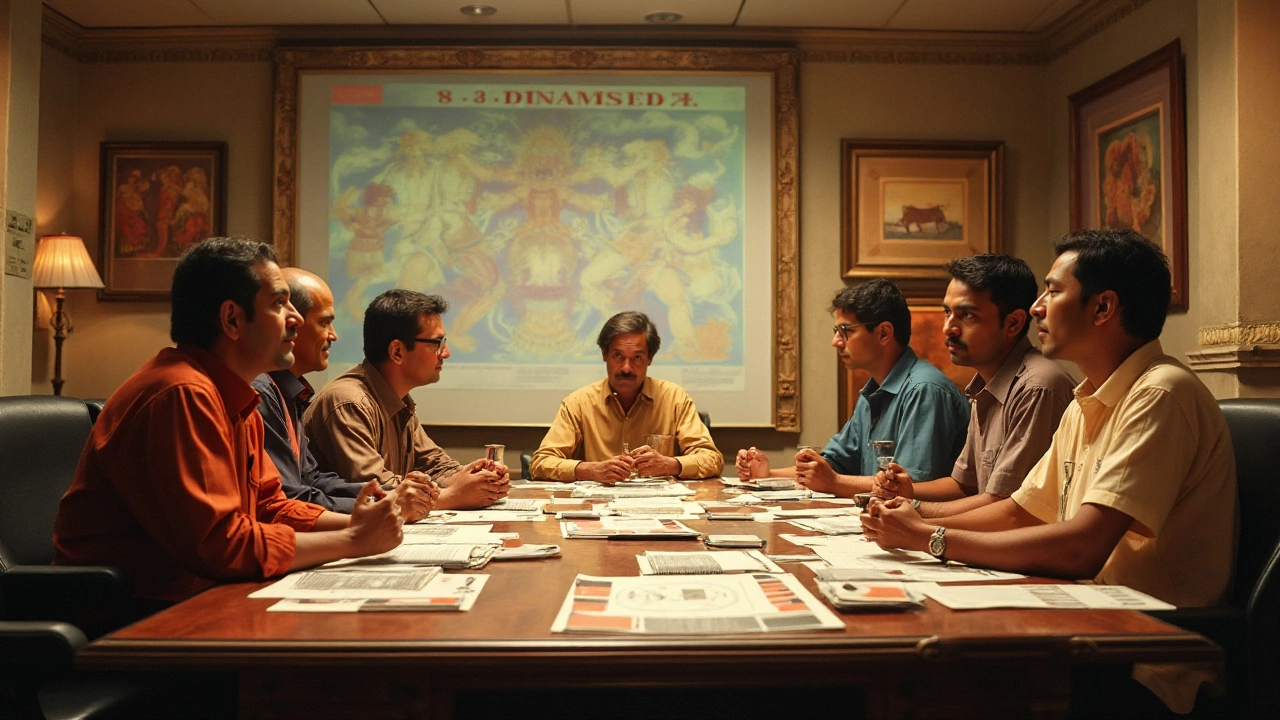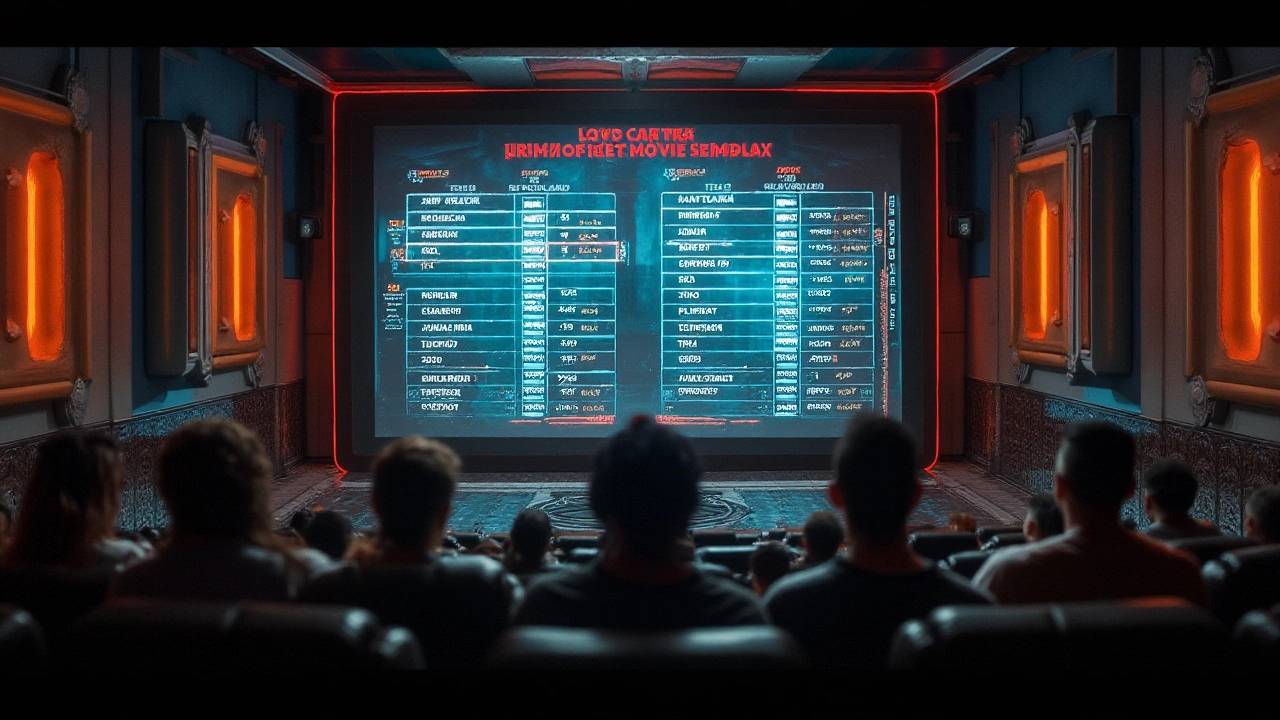John Carter's Financial Misstep: Box Office Analysis
 Jan, 4 2025
Jan, 4 2025
The film industry has its share of unexpected successes and colossal failures. Among the latter is the 2012 science fiction adventure film, John Carter, which is often remembered for its staggering financial loss. Despite its impressive visuals and Disney's hefty investment, John Carter didn't resonate with audiences as expected.
This article dives into the journey of John Carter from anticipation to release, examining the factors contributing to its box office results. We will uncover what went astray and how this influenced the broader landscape of filmmaking. Let's explore how a project so ambitious miscalculated its steps in the realm of cinematic ventures.
- The Anticipation and Initial Reception
- Budget Breakdown and Costs
- Box Office Performance
- Reasons Behind the Financial Loss
- Impact on Future Productions
The Anticipation and Initial Reception
The journey to bring Edgar Rice Burroughs' classic pulp novel to the silver screen was eagerly anticipated by many. Fans of the original stories, which were first published over a century ago, had long awaited a cinematic adaptation worthy of their beloved tales. With Disney at the helm and a seasoned director like Andrew Stanton, known for his animated triumphs, expectations were high. Many saw the opportunity for John Carter to be an adventurous blockbuster, ripe with potential for a new science fiction franchise.
Early marketing efforts painted a picture of grand spectacles, with trailers showcasing vast Martian landscapes, intricate CGI, and high-stakes action. The ambition could hardly be overstated, as John Carter boasted a production budget that reportedly exceeded $250 million, heralding it as one of Disney's most expensive endeavors at the time. Hopes rode high that the film would introduce audiences to a vividly realized universe filled with heroes and mythical creatures. Yet, beneath this fever pitch of anticipation, questions lingered about the film's ability to connect with those unfamiliar with its source material.
The Build-Up to Release
Leading up to the release, a marketing push that spanned cross-media platforms aimed to capture interest from a diverse demographic. The excitement was palpable among niche groups and dedicated followers of Burroughs' work. There was a clear intention to position John Carter alongside enduring science fiction classics. However, despite all efforts, the marketing campaign struggled with messaging clarity. Observers noted that trailers and posters seemingly failed to convey the unique essence and stakes of the story, often dwelling more on the technical marvels of special effects than the rich narrative.
Critics were initially divided. While some expressed optimism around the ambition displayed, others voiced concern over the plot's accessibility to those unversed in the lore of Mars. The initial reception post-release leaned unfavorably. The film was described by some as visually stunning but narratively lacking. There was a sense of bewilderment over its tonal direction, with some questioning whether it aimed to capture a mature audience or cater to a younger crowd. These factors notably influenced the box office turnout and are a testament to how essential a coherent marketing strategy is for any major release.
"The movie gets bogged down trying to do too much, and it's a shame because there are flashes of brilliance," said a renowned film critic upon the film's release, capturing the sentiment shared by several industry insiders.
The curious case of John Carter's initial reception serves as a lesson in how critical clear and relatable storytelling is, both in marketing terms and cinematic execution. As fans and critics dissected these elements, the conversation turned to whether a more focused vision might have equipped the film to wield greater impact, quite possibly preventing it from being likened to other grandeur-driven, yet poorly received financial disappointments of the past.
Budget Breakdown and Costs
When discussing the intricacies of film production, the financial foundation often underpins the creative ambition. In the case of John Carter, the movie had a jaw-dropping budget of approximately $250 million, which was exorbitant even by Hollywood standards. The production costs were driven by elaborate special effects, extensive location shoots, and a broad array of set designs. The aim was to create a visual spectacle that was believed essential to bring the grand alien landscapes of Edgar Rice Burroughs' novel to life.
Add to this, the promotional expenses soared to an estimated $100 million. The marketing strategy was aggressive, with advertisements spanning television, online platforms, print media, and even toys and games. Disney believed that the financial allocations for marketing were necessary to ensure ticket sales met their optimistic forecasts. They aimed to capture a diverse audience, pulling from science fiction enthusiasts to family moviegoers. However, this investment did not yield the envisioned returns.
To further break down the expenditures, a significant portion went into CGI and other visual effects, where the intent was to craft seamless and engaging other-worldly scenes that would captivate audiences. In fact, a table reveals the specificity of costs:
| Category | Estimated Cost (Millions) |
|---|---|
| Special Effects | $80 |
| Location and Set Design | $70 |
| Talent Salaries | $40 |
| Miscellaneous Production Costs | $60 |
An interview with Andrew Stanton, the film's director, highlighted a recurring theme of ambition over practicality. "We wanted to stay true to the vivid imagination of Edgar Rice Burroughs. This called for authenticity and magic that neither time nor budget could compromise," Stanton noted. His words underscore the film's struggle with balancing visual awe with fiscal responsibility.
The budget priorities, while well-intended, inadvertently became a double-edged sword, heightening both risk and expectations. While such expenses are not uncommon for potential blockbusters, the misalignment between investment and audience reception spelled trouble. The film's inability to recoup its hefty costs flagged concerns about either the storytelling or its presentation, prompting deeper introspection in the film industry about balancing heft with profit. Such insights have since informed decisions by studios aiming to avoid similar box office pitfalls.

Box Office Performance
When it comes to discussing the financial fate of John Carter at the box office, it's essential to delve into the numbers that painted a picture of disappointment. Released in March 2012, the film opened to a meager $30.6 million in North America during its first weekend, a far cry from the expectations set by its $250 million production budget. Worldwide, it didn't fare much better initially, ultimately grossing about $284 million at the global box office. This figure might appear respectable at a glance, but the costs of marketing and distribution meant that these numbers were far from lucrative.
Let's break down the components contributing to its underperformance. On the domestic front, the opening weekend gave a significant insight into its trajectory. Despite extensive marketing campaigns and a prime release date, John Carter failed to captivate a broad audience. Analysts pointed to several reasons, including inadequate marketing that didn't clearly convey the film's plot or appeal to a specific target audience. Consequently, word-of-mouth, which can often salvage a struggling feature, was not strong enough to draw additional viewers to the theaters in subsequent weeks.
Internationally, while the film showed slightly better results, the revenues still weren't substantial enough to offset the enormous budget. The lack of a recognizable lead actor at the time, coupled with the unfamiliar source material, didn't resonate well with the international markets either. Hence, even though it managed to claw back some finances from foreign territories, it was nothing compared to what Disney had anticipated. The misjudgment of the target demographic turned out to be a key factor in this misalignment between expectations and reality.
John Carter entered the market as a high-stakes gamble that unfortunately did not pay off. A senior film executive noted, "The film didn't fail because of quality; it was strategy that did not hit the mark," illuminating where the fault lines lay. The aftermath of its performance forced Disney to report a quarterly loss of $84 million during that fiscal year, making it a glaring example of a box office miss.
Below is a concise table showing a comparison between production budgets and box office earnings for movies in a similar category during the same period:
| Film | Production Budget | Box Office Revenue |
|---|---|---|
| John Carter | $250 million | $284 million |
| Mission: Impossible – Ghost Protocol | $145 million | $694 million |
| Prometheus | $130 million | $403 million |
The table underscores the disparity between its financial inputs and outputs in contrast to its contemporaries. The narrative surrounding its box office performance offers cautionary tales for future film ventures, reminding stakeholders of the importance of marketing, timing, and consumer connection. Without aligning these elements, even films with expansive budgets and arresting visuals can face the same fate as John Carter.
Reasons Behind the Financial Loss
'John Carter' was conceived as an epic tale with the potential to become a blockbuster franchise, yet the reality unfolded quite differently. One of the primary reasons for its financial loss lies in its bloated production budget. The film reportedly cost around $250 million, excluding marketing expenses, positioning it as one of the most expensive films ever made at that time. This substantial budget stemmed from extensive CGI and visual effects, designed to bring the vivid landscapes of Barsoom to life, reflecting the grand vision of Edgar Rice Burroughs' original works. However, the budget ballooned due to production delays and re-shoots, making it challenging to recoup the investment.
Another critical factor was the marketing campaign—or lack thereof. Disney struggled to position 'John Carter' to its target audience, leading to a campaign that many critics argue was both confusing and insufficient. Some promotional materials were criticized for being too cryptic, failing to represent the movie's scope accurately. A common perception was that potential moviegoers didn't know what 'John Carter' was about or why they should buy a ticket. In fact, Boxoffice Magazine described the marketing effort as "bewildering."
The timing of the release also contributed to its weak performance. Released in March 2012, 'John Carter' faced stiff competition in a crowded market, including animated films and teenage blockbusters that captivated the family demographic. The cinematic landscape during that period wasn't favorable for a genre-blending epic with an unfamiliar title. This competition, combined with a relatively lukewarm reception from critics, affected its ability to draw viewers who were already skeptical of the film's premise.
Director Andrew Stanton, reflecting on the experience, mentioned, "I ended up being blind to the complexities of marketing a first-of-its-kind film." His insight sheds light on the challenges filmmakers face when launching a novel concept to an already discerning audience.
The title itself also played a part in the poor box office returns. Initially titled 'John Carter of Mars', Disney elected to drop 'of Mars' to broaden its appeal and avoid associations with previous sci-fi flops. Unfortunately, this decision backfired, rendering the title vague and not distinct enough to entice potential viewers drawn to the science fiction genre. It's a stark reminder that sometimes, clarity in branding can be as crucial as the content itself.
Lastly, despite its adventurous intent, 'John Carter' found itself lacking a clear target audience. Neither purely a family-friendly Disney classic nor a gritty adult sci-fi, it occupied a middle ground that made it harder for any single group to forge a strong connection. This genre blending, although creatively ambitious, impacted its ability to resonate strongly with any specific demographic, leaving it without a solid fanbase to champion the film beyond its initial release.

Impact on Future Productions
The financial fallout from John Carter served as a cautionary tale for Hollywood's big-budget endeavors. As studios analyze its underperformance, the narrative surrounding blockbuster films shifted. There was a tangible hesitance among studios to greenlight similar projects without concrete evidence of audience interest. Executives became increasingly wary of committing vast resources to films without a proven fanbase or undeniable star power, focusing on franchises and adaptations with built-in followings.
In the wake of John Carter's lackluster performance, studios also began to scrutinize marketing strategies more closely. The film's marketing was often critiqued for not effectively conveying the high-stakes adventure awaiting viewers, which was a key factor in its lack of appeal. More attention was subsequently paid to transparent marketing that clearly communicates a movie's essence to the target audience.
"John Carter's missteps taught us the importance of connecting with an audience on every front, from the storyline to the poster," reflected an industry insider.
Moreover, the film industry experienced a noticeable tilt towards leveraging nostalgic revivals and franchises post-John Carter. The appeal of a built-in fan base from relaunched series became the safer bet than untested narratives. Filmmakers revisited classics with renewed vigor, understanding that audiences favored familiar characters. Many classics were reconsidered for remakes or sequels, reshaping the cinematic landscape that once prioritized original content.
Interestingly, this shift also unveiled opportunities for more measured budgetary controls. The financial debacle underscored the necessity of balancing high-end CGI with prudent financial planning. Even films with colossal budgets started integrating more resource-savvy techniques, reminding producers that budget management was as crucial as creative vision. Despite John Carter's stumble, the film industry continued to evolve, learning from its hard-learned lessons.
To represent the effect on Disney specifically, the table below illustrates the timeline of crucial decisions post-John Carter:
| Year | Decision |
|---|---|
| 2013 | Increased focus on known IPs and franchises |
| 2014 | Reevaluation of marketing strategies |
| 2015 | Launch of nostalgia-driven productions like "Star Wars: The Force Awakens" |